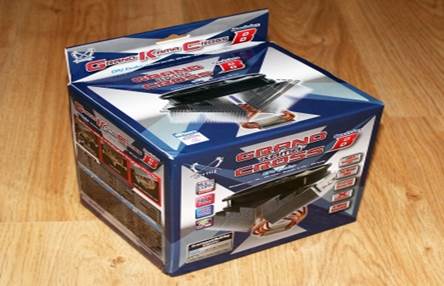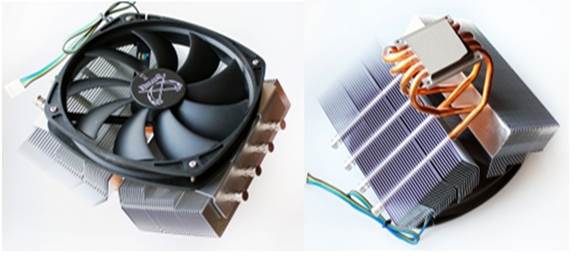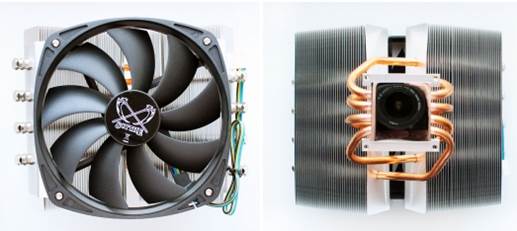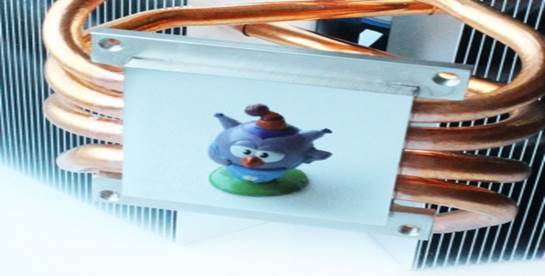The second edition
of the flagship Japanese Scythe Grand Kama Cross cooling device will bring us
an exciting surprise underneath its case. Today, we will lift the veil of
secrecy to see what it is.
There’s nothing secret with the products
that used to belong to the CPU air-cooling segment for quite early time. There
is nothing totally new and particularly exciting in terms of increasing cooling
efficiency and reduce noise, and most manufacturers simply add some aesthetic
adjust buttons to their current products and support some new platforms. The most
typical example here will be the “new” Scythe Grand Kama Cross Rev. B released
in mid-2012.
Three years ago, Japanese Scythe Company,
Ltd. introduced the first iteration of this cooling system. And do you know
what they have innovated in this cooler design since then? Nothing! In fact,
there are absolutely no structural changes in Rev. B compared with the first-generation
Grand Kama Cross. The only thing that let Scythe affirm here was that this new iteration
supported LGA 2011 and formally supported AMD Socket FM1 and FM2, which simply
didn’t exist if we’re back in 2009-2010. Still, we decided to test the cooling
efficiency of this product once again, especially since our today’s test is
based on an LGA 2011 microprocessor. Let’s see what the unique leading-cooler
from Scythe is capable of on a six-core CPU.
Packing and accessories
The container of Scythe Grand Kama Cross
Rev. B is a big-cardboard box with a strap on top.

Scythe
Grand Kama Cross Rev. B’s container
At the front of the box, there is an image
of the product and a list of all processor sockets it supports. The sides have
technical specifications, photographs when fitting up, warranty terms and
conditions and main features:
This cooling device accompanies with the LGA
775/1155(6)/1366 kits with plastic push-pins, AMD kit, an LGA 2011 keys and
screws, Scythe heat-sink glue along with installation and instructions guide.

Accessories
and companion devices
This cooler was made in Japan. Its current
retail price is about 40 USD. Scythe Grand Kama Cross Rev. B brings out 2-year
warranty as other coolers of Scythe.
Design and functionality
Scythe Grand Kama Cross doesn’t look like
customary ones at all. While it is a flagship-cooler (with the airflow directed
towards the front of motherboard PCB), it includes two aluminum heat-sink strips
installed at a 40-degree angle to the motherboard front face (the similar one
also creates X-structure). There is a 40 nm fan attached at the top:

The
product design
It weighs 750 grams, not so heavy according
to current CPU-coolers standards. It has the size of 177x140x137 mm and
detailed size is described following the above pictures:
There are 72 slot radiators in total, 36
per strip. The slots in each array are divided into three groups, 12 per group,
and the lower they sit on the heat pipes, the longer they are:

Design
description
This way of design lets Scythe use the
heat-sink surface underneath the fan in the most effective manner, while directing
the airflow right to the heated components in the area around the processor
socket. The slots are cemented against the heat pipes are 0.4-mm thick, and the
gaps between them are about 2.0 mm.
This section of the heat-sink range affecting
variable length of the heat-sink slots produced another obvious advantage: reduce
cool-airflow resistance:
Therefore, we can assume that Scythe Grand
Kama Cross is also an efficient product even at respects of lowering fan
rotation speeds. The fan is 140 mm in diameter and closely set on the aluminum
strips.

Pictures
of fitting up the fan
Grand Kama Cross has 6 heat pipes with
diameter of 6 mm each. They are welded tightly to the base of the aluminum
strips, but we need to see that there are no grooves on the surface of this
4mm-thick base:
The heat-sink base has big 38x38 mm size, surface
polished as mirror.

Heat-sink
base surface
The layer of heat-sink glue printed on the
surface of the base of the LGA 2011 microprocessors looks identical and
especially perfect.
The second edition of Scythe Grand Kama
Cross pops up with the design including 9 fan blades, similar to the first.
That’s Scythe Slip Stream 140 PWM with a hole to match the 120mm-sized fan
landing spots:

Scythe
Slip Stream 140 PWM
This model is marked as SM1425SL12ML-P. Its
rotation speed may be adjusted by using pulse-width modulation method (PWM) during
the period of temporary stay from 500 to 1,300 RPM (±10%). The noise level as declared
is 9.6-24.7 dBA, while the moving speed of cool airflow is about 27.2-69.9 CFM.
The slide design in the fan motor can work at least 30,000 hours.
The fan’s max power consumption is 2.64 V at
2A intensity. Everything is pretty modest to say. The rotor diameter is 39 mm,
and the length of the cable consisting of four wires is 300 mm long.